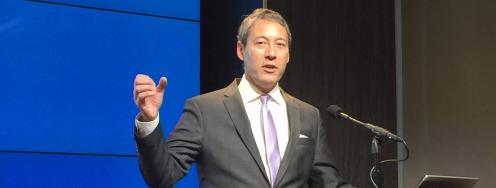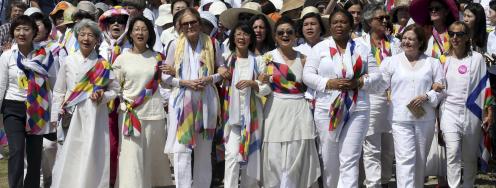Seizing the Moment with North Korea
The following is a guest post by Governor Bill Richardson.
During my most recent trip to North Korea, as old enemies threatened war, top government and military leaders in Pyongyang told me point-blank that tensions were higher than they had been since the Korean War. As I appealed for restraint, I made the argument that North Korea had an opportunity to show the international community that it was ready to return to diplomacy.
I was gratified when the North did not follow through with its military threats against the South. And nobody could have foreseen that leaders from the North and South would be sitting down face-to-face, as they did last month in Bali, to explore the possibility of new negotiations over the DPRK’s nuclear ambitions.
Based on our unpredictable history with North Korea, it is logical to be skeptical – even cynical – about the potential for a new round of six-party talks. But I am hopeful, because that same history suggests that as long as we are talking with North Korea, we are far less likely to see destructive acts like last year’s sinking of Chenoan and the 46 sailors who perished; or the artillery barrage that killed South Korean soldiers and civilians on Yeonpyeong Island. Those acts and the subsequent preparations for war on both sides of the DMZ raised the real possibility for a misunderstanding that could have easily spiraled into nuclear war.
As expected, all sides are hesitant to return to six-party talks unless there is reason to believe we can achieve a different outcome than we’ve seen in the past.
When I met last December with Kim Kye-gwan and Ri Yong-ho, the chief nuclear negotiator, they were receptive to many of the proposals I put forth as a way to ease tensions in the region and re-establish dialogue.
First, they agreed to allow monitors from the International Atomic Energy Association into the new uranium enrichment facility at Yongbyon.
Second, North Korea is willing to negotiate with South Korea and the U.S. to sell its 12,000 fresh-fuel rods to the South so they can’t be used to extract fissile material.
I also met with General Pak of the Korean People’s Army. He was open to my idea for a military hotline between North and South Korea, as well as a military commission with the South and the U.S. to monitor and prevent future conflicts in the disputed areas of the Yellow Sea.
The military leaders also informed me that they recently discovered the remains of several American soldiers who were killed during the Korean War. They are willing to turn over the remains, as they have done with me in the past, and re-start the joint U.S.-North Korea recovery operations that were suspended in 2005 by then-Defense Secretary Donald Rumsfeld. I strongly advocate that we resume this partnership on behalf of our missing Korean War veterans and their families, regardless of our differences with North Korea.
These agreements are good starting points, should new negotiations begin. The U.S. and the other participants in the six-party talks should reciprocate with an offer of food aid, with proper safeguards, to help North Korea prevent another famine.
However, the larger goal of any new talks with North Korea must involve a road map for the dismantling of its nuclear program. The only way to achieve that goal, if in fact it is achievable, is to engage in dialogue with North Korea. The alternative is to do nothing, and expect nothing in return, while North Korea continues to build up its nuclear arsenal and missile technology and make it available to other countries.
We have a diplomatic opportunity with North Korea. Let’s seize it.
After serving in Congress, as U.S. Ambassador to the United Nations, as U.S. Secretary of Energy and as Governor of New Mexico, Bill Richardson is now serving as President of The Richardson Center for Global Engagement, a non-profit corporation dedicated to promoting international peace and dialogue.



